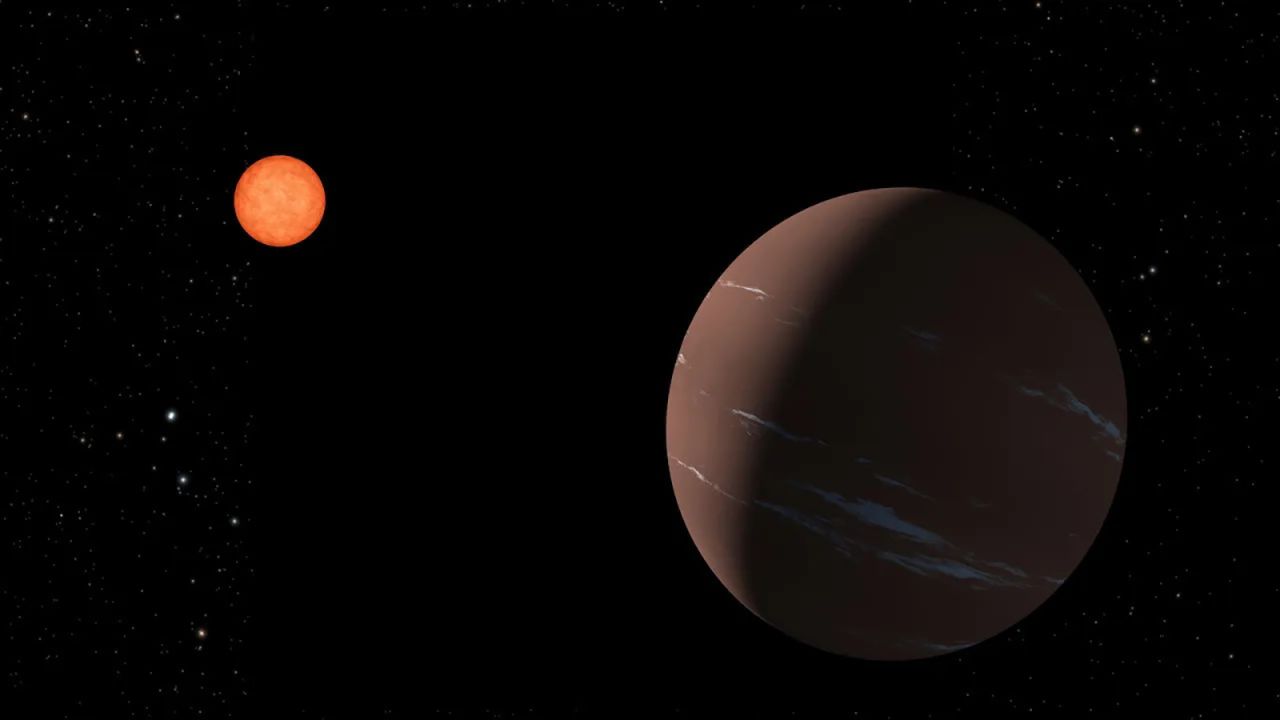(CNN) — Astronomers have discovered a “super-Earth,” a world larger than our planet, orbiting a star located about 137 light-years away. It is possible that another Earth-sized planet orbits the same star.
The giant exoplanet, known as TOI-715b, orbits a red dwarf star smaller and cooler than our Sun, and astronomers discovered the planet thanks to NASA's TESS (Transiting Exoplanet Survey Satellite) mission. In January a Stady About the discovery in the magazine Monthly Notices of the Royal Astronomical Society.
The researchers found that the planet, whose width is estimated to be one and a half times the width of our planet, takes a little more than 19 Earth days to complete its orbit around its star. The planet is close enough to its star to be in the habitable zone, that is, at a distance from the star that provides the planet with the right temperature for liquid water to exist on its surface.
The habitable zone is usually calculated based on factors such as the size, temperature and mass of the star, as well as the reflectivity of the planet's surface. But there can be large margins of error associated with these factors, raising questions about whether the planet is actually in the habitable zone, says the study's lead author, Dr Georgina Drensfield, a postdoctoral researcher in the university's School of Physics and Astronomy. Birmingham, United Kingdom.
Astronomers believe TOI-715b exists in a narrow, more ideal region around the star known as the habitable zone, which is unlikely to be affected by margins of error.
“This discovery is exciting because it is the first super-Earth discovered by TESS within the habitable zone,” Dransfield says. “In addition, because it is relatively close, the system is suitable for future atmospheric research.”
Tess, the planet hunter
Since its launch in 2018, TESS has helped astronomers discover planets around relatively nearby stars, and is suitable for follow-up observations using ground-based and space-based observatories.
“This allows us to get a much clearer picture of the diversity of exoplanetary systems orbiting a wide range of stellar types,” Dransfield said.
Telescopes can pick up dips in starlight that indicate a planet passes in front of its star, and those dips in starlight are called transits. TOI-715b is close to its star and has a fast orbit, meaning the planet passes in front of or crosses its star frequently. As a result, the exoplanet is an ideal candidate for future observations using the James Webb Space Telescope. The Webb telescope observes the universe in infrared light, which is invisible to the human eye, and can peer into planetary atmospheres.
As the planet passes the star, starlight filters through, allowing Webb to look for signs of the atmosphere and even determine the composition of the planet's atmosphere. And knowing whether planets have atmospheres could reveal more about their potential to be habitable for life.
“We want to know the mass of the planet with great precision to know whether it is a true super-Earth or a member of the new class of ocean worlds,” explains Dransfield, referring to moons with global oceans such as Europa, found on Jupiter. Or Enceladus on Saturn. “This will allow us to shape our subsequent investigations and learn more about the demographics of exoplanets as a whole.”
Dransfield said that to confirm the existence of a possible second Earth-sized planet, researchers need more successful observations of the planet's transits at different wavelengths of light.
If an Earth-sized planet is confirmed, it would be the smallest planet discovered by TESS to date in a habitable zone.
Searching for Earth-like planets
Red dwarf stars are the most common in our galaxy, and many have been found to host small rocky worlds, such as the recently discovered TRAPPIST system with its seven planets, located 40 light-years away. Planets orbiting near these smaller, cooler stars can receive enough heat to be habitable.
But the key question is whether these planets are also close enough to be exposed to stellar flares and radiation, which could erode their atmospheres, evaporate water, and limit their ability to be habitable.
TOI-715b has only shown a few flares in the past two years and is not considered active, making it an old star, Dransfield said.
In the future, astronomers hope to be able to search for planets orbiting stars similar to our Sun, which will require the ability to block intense starlight to find faint Earth-sized planets.
Coming Tasks like Plato The European Space Agency's PLAnetary Transits and Oscillations mission will carry 26 cameras to study Earth-like planets in habitable zone orbits around Sun-like stars. The mission is scheduled to launch in 2026.
“So far, no telescope has been able to do this, but it should be possible within the next decade,” Dransfield said, referring to Plato. “This will be one of the most anticipated discoveries, because it will show us how common Earth-like planets are.”

“Proud web fanatic. Subtly charming twitter geek. Reader. Internet trailblazer. Music buff.”

:quality(85)/cloudfront-us-east-1.images.arcpublishing.com/infobae/TEQF6EONZRFGLLLDIDD4L2O4EE.jpg)

:quality(75)/cloudfront-us-east-1.images.arcpublishing.com/elcomercio/XU32LRAEZFDDPNVHLFU3CKVBYY.jpg)



More Stories
How to create 3D videos with my iPhone, it will be very useful even for your business
NASA discovers an anomaly in the Earth’s magnetic field that could have serious consequences for humans
Can the Earth be divided into two parts?